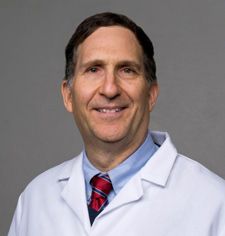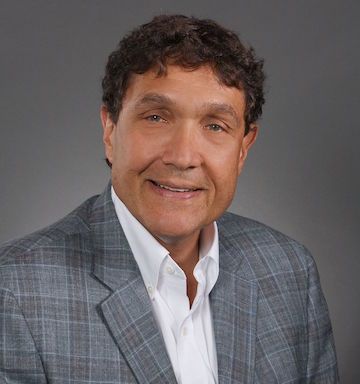Article
Dr Antonio Anzueto on Current Developments to Address COPD
Antonio Anzueto, MD, recently spoke with The American Journal of Managed Care® (AJMC®) about some of the latest developments in chronic obstructive pulmonary disease (COPD). Anzueto is a professor of medicine and section chief of pulmonary at South Texas Veterans Healthcare System, an affiliated institution with the University of Texas Health San Antonio, Texas.
In this second part of a 2-part interview, Antonio Anzueto, MD, continues a discussion with The American Journal of Managed Care® (AJMC®) about chronic obstructive pulmonary disease (COPD). Anzueto, a professor of medicine and Section Chief of Pulmonary at South Texas Veterans Healthcare System, an affiliated institution with the University of Texas Health San Antonio, Texas, reviews other aspects of COPD, including unmet needs, population health initiatives, multimobidity, and more.
This interview has been edited for clarity.
AJMC®: Are there any population health initiatives that could help address the undertreatment of comorbid cardiovascular disease in people with COPD?
Anzueto: There are initiatives from the National Institute of Health. First the National Institute of Health during the 2000s, early 2010s created a big awareness campaign about COPD, of chronic lung disease. The COPD Foundation is very active in having initiatives to increase awareness about both lung disease and association of cardiovascular disease. And the other way they do it with COPD Foundation and the other patient advocacy groups are the patient itself, the people who are suffering from this condition are the ones who are speaking out, they are telling us their story, and increasing awareness that we have of these conditions.
AJMC®: How does multimorbidity with COPD impact quality measures for organizations?
Anzueto: Every single hospital in the country, if they had a patient admitted for COPD exacerbation, and they discharged the patient home—if that patient happened to come back within 2 weeks to 4 weeks or within a month, that institution gets penalized. That institution gets a bad mark of they did not provide appropriate care to their patients. Now we have been working very diligently over the last 10 years trying to implement measures to reduce these risks of the rehospitalization in patients with COPD. We created case managers and nurses, visit their home. We educate the patient in the hospital, at home. But guess what, none of these initiatives have worked and patients continue to be rehospitalized, so it continues to have a huge burden. What happens is we miss the boat. We have not given the patients appropriate therapy at the time of discharge. There are 3 studies now that have demonstrated use the triple therapy in your patients admitted with COPD exacerbation. You will significantly decrease the risk of rehospitalization. What we need to do is we need to optimize treatment in patient with COPD. We will reduce the hospitalizations, we will reduce the cardiovascular events, we will reduce, eventually, mortality. So, that intervention by itself can have a huge impact on all the quality of care measurements that we have for management of this condition.
AJMC®: What are the biggest unmet needs for those with concomitant COPD and cardiovascular disease? And how can payers and providers best work to bridge this gap to meet these unmet needs?
Anzueto: Two major unmet needs are diagnosis. We need to continue to emphasize patients have to be diagnosed. The second point, once you've diagnosed and identified, is access of care. The population who's more vulnerable, the population who's going to be higher expense to our health care system, is a population who has limited access to these medications will increase the likelihood to prevent these events. I know companies develop programs, assistance programs, but the age that is left behind from all these programs and coupons are the Medicare population. And anybody of the age of 65, the numbers of patients both with COPD and cardiovascular disease are huge. We need to continue working to help to increase access to all these medications for this patient population. Because this is the patient population that is left out of the coupons because legally you cannot give coupons to the government. So, they may have to come with other ways to give patients access to this population that at the end of the day are going to be very cost effective, that are going to significantly impact the burden of the disease and decrease the burden of the disease in our health care system.
AJMC®: What are you working on in COPD that you're excited to share with other people in the field?
Anzueto: I think there are very different areas. One is certainly triple therapy, the culmination of 20 years of research that have allowed us to understand the mono components of the long-acting bronchodilators who are able to put it together in a fixed LABA/LAMAs, ICS/LABAs; now we can have triple therapy, we know that they are effective and safe. This has been huge.
And now the next challenge is to understand different group of patients that will benefit the most. The other point is looking at new molecules, looking at all the pathways this medication can be developed.
During the American Thoracic Society meeting we saw the results of phosphodiesterase 3 and 4 inhibitor called ensifentrine. This medication is a nebulized medication; in patients who are Group B symptomatic patients with COPD, showed significant improvement in lung function, significant improvement in quality of life measurements, and reduction in exacerbation with a very clear safety profile.
So, we have not seen any of the side effects of oral phosphodiesterase inhibitors have shown in the past. Given this medication is nebulized, we don't have those problems.
The third area is always asking ourselves, what can I do with that individual who had exacerbations, who I had on triple therapy and continues to have exacerbations, continues to be symptomatic. At the American Thoracic Society meeting and in the New England Journal of Medicine, we read about adding biologicals, dupilumab, in a patient population who has history of exacerbations, been treated with triple therapy, and they have had eosinophils more than 300. The initial study, the BOREAS study that they presented, show a very significant reduction in exacerbations and improvement in lung function. I think in the COPD in the pulmonary area, this is very exciting. It's very exciting that we are seeing more and more opportunities for the next 10 years to continue impacting the disease in ways we never suspected we should be able to do and to remind the health care providers that this is a treatable disease. COPD can be treated. COPD can be stopped, can be impacted with the proper medications as well as the other preventive measures.


